Introduction
What Do Rabbits Do In The Winter: As the seasons change and winter blankets the landscape with its frosty embrace, many animals must adapt to survive in the harsh conditions. Among these resilient creatures are rabbits, known for their fluffy fur and twitching noses. These small, burrowing mammals lead fascinating lives, and their winter activities are a testament to their adaptability and resourcefulness. In this exploration, we will delve into the world of rabbits and uncover the secrets of how they navigate the challenges of the cold winter months. From their strategies for finding food to their unique behaviors in the snow-covered wilderness, join us as we discover the intriguing world of winter rabbits feet. In the winter months, when the landscape is blanketed in snow and temperatures plummet, rabbits undergo a series of remarkable changes in their daily routines and habits.
Unlike some animals that hibernate or migrate to warmer climates, rabbits generally remain active throughout the winter. To do so, they employ a combination of physiological adaptations and behavioral strategies. One of the most noticeable changes in rabbits during winter is their thicker and denser fur, which provides better insulation against the cold. This plush coat not only keeps them warm but also helps them blend into their snowy surroundings, offering a degree of camouflage against potential predators. In their quest for sustenance, rabbits become resourceful foragers. The scarcity of green vegetation in winter necessitates a shift in their diet. They rely more heavily on woody plants, twigs, bark, and the buds of shrubs and trees.
These hardier food sources help them endure the scarcity of their typical diet, which primarily consists of grasses, herbs, and leafy greens. Additionally, rabbits often take refuge in burrows and underground tunnels during winter. These burrows serve as both shelters from the biting cold and safe hideouts from predators. Rabbit families, called warrens, huddle together for warmth, sharing body heat to conserve energy and ensure their survival. As we embark on this journey into the winter world of rabbits, we will uncover more about their unique adaptations and behaviors, shedding light on the remarkable ways they thrive in a season that challenges even the hardiest of creatures.
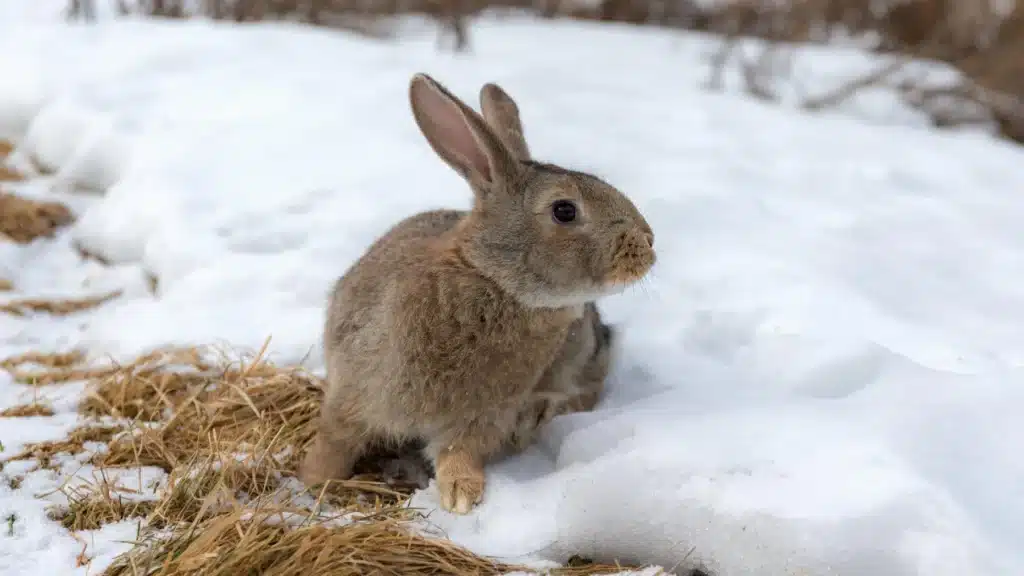
How do rabbits survive in winter?
Wild and most domestic breeds of rabbits have warm fur coats and most breeds have thick fur pads on the bottoms of their feet; these are natural adaptations to help them survive cold conditions. Wild rabbits live in underground burrows, where the temperature is kept relatively constant.
Thick Insulating Fur: Perhaps the most noticeable adaptation is their dense fur. As winter approaches, rabbits grow a thicker and more insulating coat. This fur not only keeps them warm but also helps them blend into their snowy surroundings, providing a degree of camouflage against potential predators.
Burrowing and Shelter: Rabbits are expert diggers and will often create elaborate burrow systems. These underground tunnels serve as shelters from the biting cold and as safe hideouts from predators. Rabbit families, known as warrens, huddle together for warmth, sharing body heat to conserve energy.
Nocturnal Behavior: In colder regions, rabbits may become more nocturnal during the winter. This behavioral shift allows them to forage for food and carry out essential activities under the cover of darkness when temperatures are slightly milder.
Modified Diet: The scarcity of green vegetation in winter necessitates a shift in their diet. While they primarily feed on grasses, herbs, and leafy greens during the warmer months, rabbits rely more heavily on woody plants, twigs, bark, and the buds of shrubs and trees in winter. They have specialized digestive systems that can extract nutrients from these tougher food sources.
What do rabbits eat in the winter time?
In cold climates, however, during the winter months, grasses and greens become inaccessible. So, what do wild rabbits eat then? The answer is: a rabbit eats whatever it can find. In the winter months, wild rabbits live on sticks, tree bark, pine needles, and other types of vegetation.
Woody Plants and Bark: In the absence of tender grasses and leafy greens, rabbits turn to woody plants and bark as a primary food source. They can strip the bark from young trees and shrubs, consuming the nutrient-rich inner layers. These woody materials provide not only sustenance but also essential fiber to aid digestion.
Buds and Twigs: Rabbits are adept at nibbling on the buds and twigs of shrubs and trees. This winter food source provides both nutrition and hydration. They may target plants like willow, dogwood, and fruit trees, which retain buds and twigs throughout the colder months.
Wintergreen Plants: Some evergreen plants, like holly and certain types of ivy, remain accessible and green throughout the winter. Rabbits may resort to feeding on these hardy plants when other options are limited.
Berries: In some regions, certain berry-bearing plants, such as wintergreen and juniper, continue to produce fruit into the winter. Rabbits will take advantage of these berries as a source of nourishment.
How cold is too cold for rabbits?
Very young or old rabbits, or those with medical conditions, should be kept indoors because they may not be able to tolerate cold temperatures even with modifications to their hutches and diets. Temperatures below 20 degrees Fahrenheit may be too cold even for healthy adult rabbits.
Breed Variation: Different rabbit breeds have varying levels of cold tolerance. Some breeds, like the Alaska and Siberian, have thicker fur and are better adapted to cold climates, while others, like the Angora, have thinner fur and are less cold-resistant.
Temperature Range: Most rabbits are comfortable at temperatures between 45°F and 85°F (7°C to 29°C). However, they can tolerate colder temperatures if they have proper shelter, bedding, and insulation.
Wind Chill: Wind can significantly affect a rabbit’s ability to withstand cold weather. Even if the ambient temperature is within the acceptable range, strong winds can make it feel much colder. Windbreaks and well-insulated shelters are essential in windy conditions.
Dry Conditions: Wet fur can drastically reduce a rabbit’s ability to insulate itself from the cold. Rabbits should be protected from rain, snow, and wet conditions, as damp fur can lead to hypothermia.
Do rabbits stop eating in winter?
Rabbits are fairly well-adapted for dealing with the cold, but they must eat more to meet the increased energy requirements for keeping warm. Therefore, the amount of feed provided during the winter months will need to be increased – maybe as much as three times.
Shift in Diet: In winter, rabbits adapt by shifting their diet to include more woody plants, twigs, bark, and the buds of shrubs and trees. These tougher food sources provide both sustenance and the necessary fiber for digestion.
Bark Stripping: Rabbits are known for their ability to strip bark from young trees and shrubs, consuming the nutrient-rich inner layers. This behavior provides them with a valuable food source when other options are limited.
Foraging Skills: Rabbits are adept foragers, and they’ll search for edible vegetation beneath the snow cover. They can locate and consume dormant grasses, as well as any remaining green plants that might be accessible.
Wintergreen Plants: Some evergreen plants, such as holly and certain types of ivy, retain their green foliage throughout the winter. Rabbits may feed on these hardy plants when other options are scarce.
What are facts about rabbits in winter?
Rabbits stop shedding their fur during the fall and grow a thick fur coat that keeps them warm in the winter. They are relatively comfortable in temperatures as low as 32 degrees. Rabbits are hardy, tough animals when it comes to dealing with winter weather and cold temperatures.
Thick Insulation: To withstand the cold temperatures of winter, rabbits grow a thicker and denser fur coat. This fur serves as excellent insulation, keeping them warm and helping them blend into their snowy surroundings. It also provides a degree of camouflage against potential predators.
Winter Camouflage: The white fur of some rabbit species, such as the snowshoe hare, undergoes a seasonal change. In winter, it becomes predominantly white to match the snow, providing them with effective camouflage.
Woody Plant Diet: When the usual green vegetation becomes scarce due to snow cover, rabbits shift their diet to woody plants, twigs, bark, and the buds of shrubs and trees. They possess specialized digestive systems that can extract nutrients from these tougher food sources.
Bark Stripping: Rabbits are skilled at stripping bark from young trees and shrubs during winter. This behavior not only provides them with nourishment but also can shape the growth of these plants in their environment.
Do rabbits feel cold in winter?
Rabbits can handle the cold very well as they usually have thick fur and pads on their feet, but strong winds and damp environments can make them very uncomfortable. Their hutch should be dry and warm, and there are many things you can do to ensure this.
Fur Insulation: Rabbits grow a thicker and denser fur coat in preparation for winter. This fur provides insulation and helps trap warm air close to their bodies, reducing heat loss. However, extremely cold temperatures can still challenge their ability to stay warm.
Shivering: When rabbits become too cold, they may shiver. Shivering is a physiological response that generates heat by rapidly contracting and relaxing muscles. It helps raise their body temperature and combat the cold.
Seeking Shelter: To escape the cold, rabbits seek shelter in their burrows and underground tunnels. These shelters provide a warmer and more stable environment, shielding them from the harsh winter weather.
Huddling: In communal living situations, such as rabbit families or warrens, rabbits may huddle together for warmth. This group behavior allows them to share body heat and conserve energy collectively.
How long do rabbits live as a pet?
It is important that you understand all the requirements for caring for a rabbit before you buy one. Rabbits generally live for 5 to 8 years depending on their environment and breed, but they can live for as long as 12 years. If you decide to purchase a rabbit, make sure you are prepared to care for them that long.
Breed: Different rabbit breeds have varying lifespans. Smaller breeds tend to live longer than larger ones. For example, smaller breeds like the Mini Rex or Dutch may have longer lifespans compared to larger breeds like Flemish Giants.
Genetics: Genetics play a significant role in a rabbit’s longevity. Some rabbits are genetically predisposed to health issues, while others may inherit robust health. Responsible breeding practices can influence genetic health.
Diet: A well-balanced diet is essential for a rabbit’s health and longevity. High-quality hay, fresh vegetables, and a controlled amount of rabbit pellets provide the necessary nutrients. Avoiding excessive sugary treats and providing fresh water are also critical.
Living Conditions: The environment in which a pet rabbit lives can affect its lifespan. Clean, spacious, and safe housing with protection from extreme temperatures and predators is essential. Stress-free living conditions can contribute to a longer life.
Do rabbits sleep at night?
Rabbits are nocturnal animals, which means they sleep most of the time during the day and are active at night. Their lifestyle can be a little confusing for rabbit owners, as they may seem to sleep much more than other pets. But in reality, rabbits need it to rest and prepare for a night of activity.
Crepuscular Activity: Rabbits are naturally most active during the early morning and late evening, which corresponds to dawn and dusk. This is when they are more likely to be feeding, grooming, playing, and socializing.
Daytime Rest: During the day, rabbits tend to rest and sleep in short periods. They might find a quiet, secure spot in their enclosure or burrow to relax. However, these daytime resting periods are not as deep or prolonged as their nighttime sleep.
Nighttime Sleep: At night, rabbits are more likely to engage in longer, deeper periods of sleep. They often sleep with their eyes closed and may appear more relaxed and less responsive to external stimuli.
Vigilant Behavior: Despite their nighttime sleep, rabbits remain alert and vigilant to potential threats. Their ears are constantly scanning for sounds, and they can quickly awaken and react to any perceived danger.
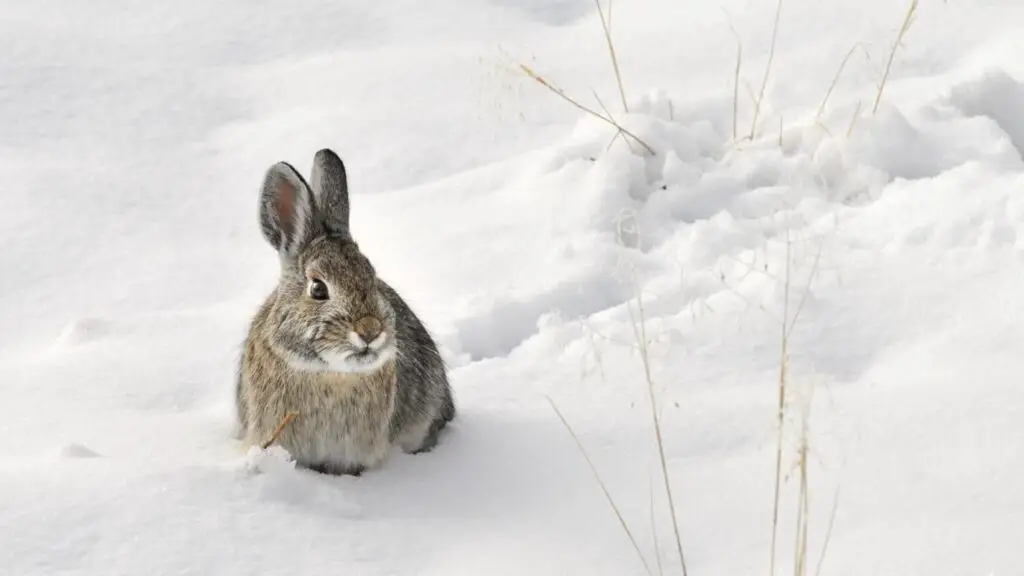
Conclusion
The winter habits and adaptations of rabbits are a testament to the remarkable resilience and resourcefulness of these small, seemingly delicate creatures. When the frosty winds blow and the landscape is cloaked in snow, rabbits undergo a series of changes to ensure their survival. Their thick fur, designed for insulation and camouflage, helps them brave the cold while remaining hidden from predators. Resourceful foragers, rabbits shift their diet to include tougher, woody vegetation when their usual greenery becomes scarce. Seeking refuge in burrows and communal warrens, they huddle together for warmth and protection. These behaviors not only allow rabbits to endure the challenges of rabbits winter but also play a vital role in maintaining their populations and the balance of ecosystems.
As we observe these resilient creatures navigating the frosty wilderness, we gain a deeper appreciation for the wonders of the natural world and the remarkable strategies animals employ to thrive in the face of adversity. Rabbits, it seems, have mastered the art of survival in the harshest of seasons, reminding us of the beauty and complexity of life in all its forms. Moreover, the winter adaptations of rabbits offer valuable insights into the intricate web of nature’s interconnectedness. These small mammals play a significant role in shaping their environments. By nibbling on bark and twigs, they help prune shrubs and trees, promoting new growth and maintaining a balanced ecosystem.
Their burrows not only provide shelter for themselves but can also be utilized by other wildlife species seeking refuge from the cold. Rabbits also serve as a vital link in the food chain. Their presence sustains predators such as foxes, hawks, and owls during the lean winter months, contributing to the delicate equilibrium of predator-prey relationships. As we contemplate what rabbits do in the winter, we are reminded of the intricate dance of life that occurs year-round in the natural world. These resilient creatures, with their adaptations and behaviors, inspire awe and respect for the delicate balance that sustains our planet’s diverse ecosystems.

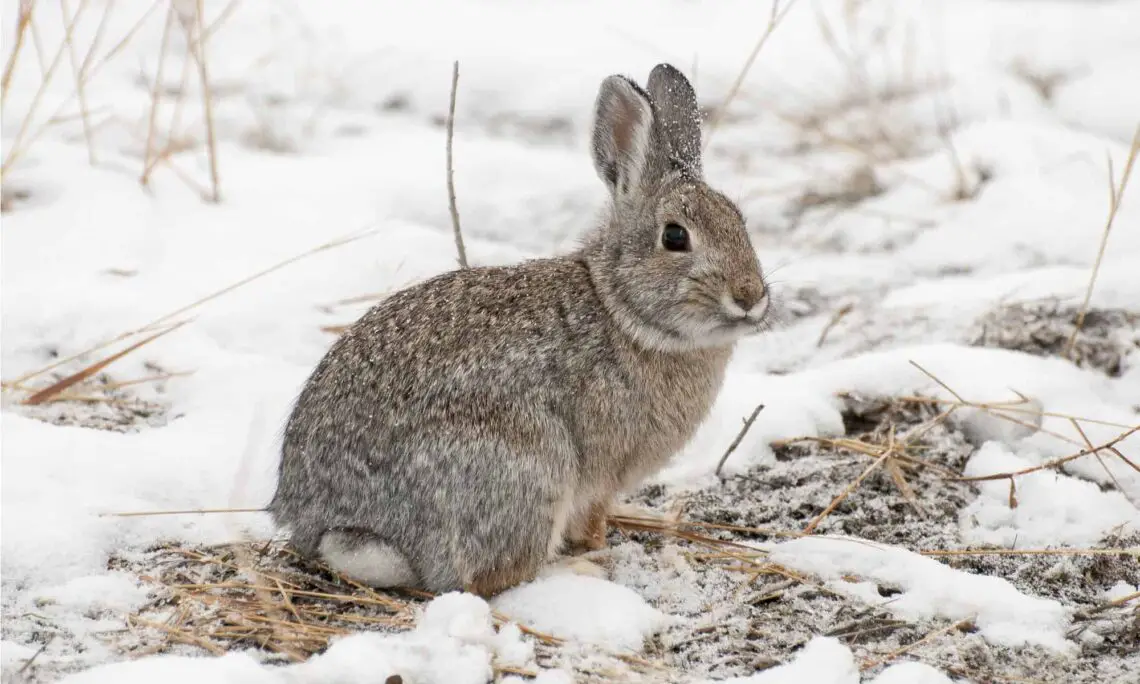
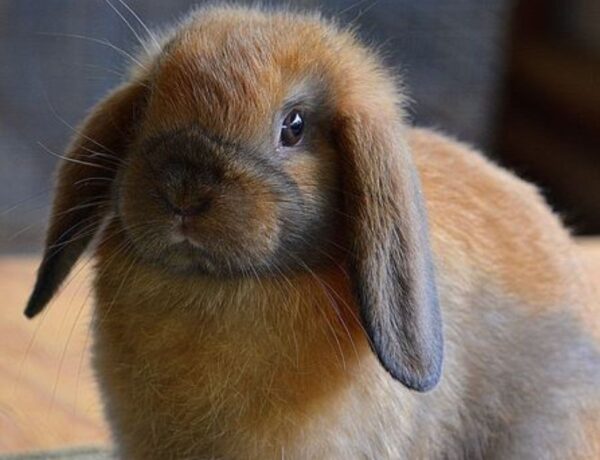
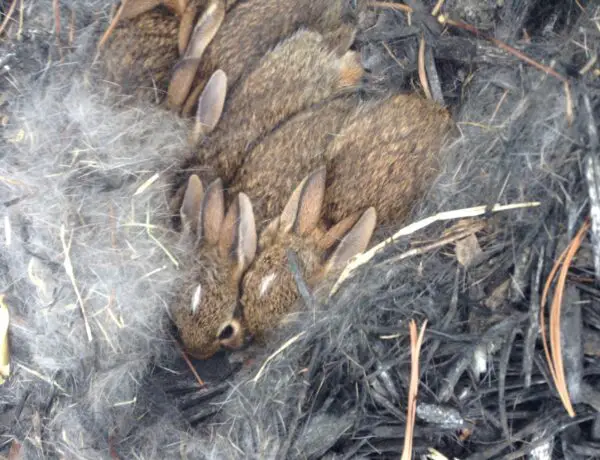
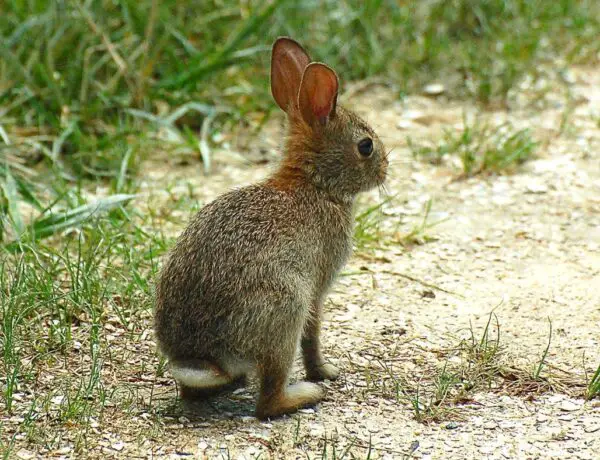
No Comments